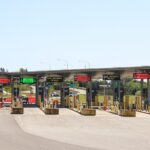Manitoba Rural Driver Education Crisis Frustrates Teens
The open roads of rural Manitoba—once a symbol of freedom for generations of teenagers—have become a source of mounting frustration. As summer approaches, hundreds of rural teens face yet another season without access to proper driver education, trapped in a bureaucratic limbo that shows little sign of resolution.
“I’ve been waiting over a year now,” says Emma Thompson, a 16-year-old from Neepawa. “All my friends in Winnipeg got their licenses months ago. Out here, we’re just stuck.”
Emma’s experience isn’t unique. Since the Manitoba Public Insurance (MPI) restructured its driver education program in 2023, rural communities have borne the brunt of service disruptions. The numbers tell a troubling story: enrollment in rural driver education has plummeted by nearly 60% compared to pre-pandemic levels, while urban centers have largely recovered.
The implications extend far beyond mere convenience. In rural Manitoba, where public transportation is virtually non-existent, a driver’s license represents essential mobility. For farming families, teenage drivers often play crucial roles in agricultural operations. For others, driving means access to employment, education, and healthcare facilities that may be dozens of kilometers from home.
“This isn’t just about teenagers wanting freedom,” explains Dr. Sarah Wilson, a sociologist at Brandon University who studies rural development. “In rural communities, driving is fundamentally tied to economic participation and quality of life. These delays create ripple effects throughout entire communities.”
The crisis traces back to MPI’s decision to shift from school-based instruction to a centralized model managed by private contractors. The transition, while well-intentioned, failed to account for the unique challenges of rural service delivery: longer distances, smaller class sizes, and difficulty attracting instructors to remote locations.
Parents have grown increasingly vocal about what they see as urban-centric policymaking. “It feels like nobody in Winnipeg understands what it’s like out here,” says Robert Chen, a parent from Virden whose son has been waiting nine months for driver education. “Our kids are being treated like second-class citizens.”
MPI officials maintain they’re working diligently to address the backlog. “We recognize the challenges rural communities face and are actively recruiting instructors for underserved areas,” said MPI spokesperson Jennifer Reimer in a written statement. The crown corporation points to recent initiatives including signing bonuses for rural instructors and exploring online learning options for theoretical components.
But critics argue these measures are insufficient. Rural municipalities have begun exploring alternative solutions, including subsidizing private instruction or developing community-driven programs outside the MPI framework. The Rural Municipalities of Manitoba organization has called for emergency funding to clear the backlog before another school year begins.
Meanwhile, teens like Emma Thompson continue waiting. The consequences extend beyond inconvenience—many rural teens report declining mental health tied to their isolation, while others have made risky decisions to drive without proper training or licensing.
“I know people who just drive anyway,” Emma admits reluctantly. “It’s not safe, but they feel like they don’t have a choice.”
As Manitoba heads into summer, the season when driver education traditionally accelerates, the question remains whether policymakers will finally provide rural communities with the solutions they desperately need. The open roads of rural Manitoba still represent freedom—but increasingly, they’re a freedom that feels frustratingly out of reach for those who need it most.
For more insights on Manitoba cultural issues, visit CO24 Culture or explore broader societal trends at CO24 Trends.
























